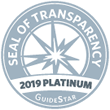Radioactive iodine (RAI) therapy, also referred to as I-131 therapy, is used to treat any thyroid cancer that is left after a total thyroidectomy. This may include either a small amount of cancer remaining in the neck (residual) or metastases that cannot be removed with surgery, including cancer that has spread to the lungs. RAI is not used after a lobectomy.
Thyroid cells have the ability to absorb and concentrate iodine and use iodine to make thyroid hormone. Since differentiated thyroid cancer develops from normal thyroid cells, most DTC also have the ability to absorb iodine. Thus, RAI is used as a targeted form of treatment to eliminate all remaining normal thyroid tissue and destroy (ablate) residual cancerous thyroid tissue (see Radioactive Iodine brochure). Since most other tissues in the body do not absorb iodine, RAI administered for ablation usually has little or no effect on organs outside of the thyroid. However, in some patients who receive larger doses of RAI for treatment of thyroid cancer, the salivary glands that produce saliva can be affected and result in dry mouth. In addition, for some children, it may be necessary to re-treat remaining DTC tissue. If higher doses of RAI are used more than once, there may also be a small risk of developing other cancers later in life. The potential risks of treatment can be minimized by using the smallest, effective dose of RAI and waiting as long as possible between RAI treatments to ensure that more RAI is necessary. A single RAI treatment may continue to destroy the cancer for 12 months or more after administration. So, waiting is not a risk, and may be a benefit, to see if additional treatment is necessary. Balancing potential risks against the benefits of RAI therapy is an important discussion to have with your child’s doctor before this therapy and a very important reason to have your child cared for in a high-volume pediatric thyroid cancer center if possible.
The amount of spread (metastases) outside of the thyroid gland and to lymph nodes is used to select patients where the benefit from RAI is greater than the risk of treatment. Patients with small tumors and patients with no or minimal evidence of spread to lymph nodes behind the thyroid are considered to be at low-risk and these patients may be followed without receiving RAI ). For patients with evidence of significant spread to tissue next to the thyroid, into lymph nodes or lungs, RAI is administered.
PREPARING FOR RAI: Two to three weeks before the RAI, patients are placed on a low iodine diet and most are asked to stop taking thyroid hormone medication in order to have the TSH increase. This is an important step to increase the effectiveness of the RAI treatment (see Low Iodine Diet FAQ). For patients that cannot tolerate stopping thyroid hormone, there is an injectable form of TSH that may be used. Several days before the RAI, a blood test is done to evaluate the TSH and the tumor marker, thyroglobulin. A diagnostic whole body scan (Dx- WBS) is performed to determine how much thyroid cancer is present. This information is used to help decide on the size of the treatment dose of RAI. About seven days after the RAI treatment, a repeat WBS may be performed. This post-treatment WBS (Rx-WBS) takes advantage of the larger amount of RAI used for treatment, and in 10-15% of patients there may be new areas of thyroid cancer seen on the post-treatment WBS. This is important information for surveillance but no additional immediate treatment is typically necessary.



